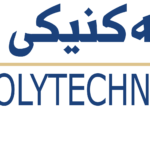- Siver Ibrahim Ismael
- [email protected]
- 0750 757 6365
- my thesis - FINAL
-
Ultra-High Performance Concrete (UHPC) has appeared in the past two decades. It is a relatively new type of concrete that exhibits mechanical properties that are far superior to conventional concrete. All around the world, many bridges have been built but are structurally deficient before reaching their design services. Because bridges are subject to high live loads due to traffic volume, they are usually overlaid with materials like NSC, bituminous, etc., which cause damage due to their weak resistance to tension force and permeability. Generally, deterioration starts with cracking on the top surface of bridge decks; over time, this damage goes through the substructures, and those structurally deficient bridges require a very high budget to replace. Applying a thin layer of UHPC on top of normal concrete bridge decks has been proposed as a potential treatment in a prior study. Because UHPC has a high compressive and tensile strengths, which mainly result from the addition of steel fibers that enhance durability and long-term stability properties.
In this study seventeen simply supported reinforced concrete flat plate
slabs 1500x500x140 mm were casted and tested, loaded through two-line loads along the short span direction, to investigate the strength and behavior of reinforced concrete bridge deck slabs overlaid with UHPC.
The main variables studied in this investigation were:
• Overlay thickness 20-50 mm.
• Reinforced UHPC overlay with reinforcement ratio 0-1.31 %.
• Interface patterns rough, horizontal groove, vertical groove, cross-hatch groove, and diagonal groove.
• Substrate material compressive strength 20-40 MPa.
• Three types of material evaluated for overlay application NSC, HPC,
and UHPC.
• The addition of a mechanical connector with a rough surface pattern
evaluated zero until three rows of an anchor.
Results indicated that using UHPC overlay can double the ultimate
strength carried by the composite slab compared with the HPC overlay. The thin layer of UHPC as the wearing surface increases the life of the existing structure and reduces the maintenance cost twice compared with HPC. Also, the addition of embedded rebar at the UHPC layer tends to conclude shear stress at the interface and normal stress at the UHPC overlay by about 30 %. Moreover, ultimate strength increases with an increase in the degree of interface roughness between two layers of concrete, and an adequate bond can be attained with all interface patterns. The ultimate strength increases with an increase in substrate material compressive strength due to adhesion and cohesion properties at the interface. For bridge deck slabs overlaid with UHPC the mode of failure is governed through the substrate while the adequate bond strength is provided by good surface preparation, otherwise, top concrete crush and splitting of the composite structure take place with HPC and NSC. Test results also indicated that the addition of a mechanical connectors with rough surface preparation leads to an increase strength by 50 %. With the use UHPC overlay, the characteristics of the slab were entirely enhanced. The central deflection increased by about 50% compared with HPC. Overlay failure never happened with UHPC overlay. The concrete compressive and tensile strains are increased by a considerable amount (for the same load level). UHPC overlay with proper surface preparation leads to composite structure behaving monolithically and failure load goes through the substrate. - Erbil Technical Engineering College
- Civil Engineer
- Structural Engineering
- Zainab Zakaryia Ali
- [email protected]
- 0750 481 5025
- Thesis, MSc
-
Nature-like designs inspired designers to adapt them in real-life applications due to their strength and optimal mechanical properties. In the current study, irregular Voronoi structures were prepared through using of Rhinoceros 7Grasshopper software. Both normal and elongated Voronoi designs (based on the columnar joints that exist naturally) were designed, having three separate models per each, homogeneous, gradient I, and gradient II are based on homogeneity and having a core inside the samples. Stereolithography (SLA) three-dimensional (3D) printing was used to fabricate biopolymer Plant-based materials to be prepared for mechanical testing. Generally, the experimental results showed that the proposed Voronoi designs with elongated structures have better mechanical properties. They are about 21% superior to the normal Voronoi structures in terms of resisting deformation and approximately 30 % in energy absorption. Hence, these designs are promising topologies for future applications. Moreover, the failure mode of the six structures occurred due to the collapse in three stages: the cells’ strut fracture, cell collapse, and eventually, fracture growth. In regard to the designed models, the homogeneous model type showed a higher stiffness and ultimate strength while the gradient I model exhibited a higher Young's modulus. Furthermore, the homogeneous and gradient II models showed a great energy absorption property. Besides, the gradient II model possessed the poorest mechanical properties due to its weak geometry design. Hence, this model is not preferred in lightweight-to-strength applications.
- Erbil Technical Engineering College
- Mechanical and Energy Engineering
- Applied Mechanic
- Kurdistan Wns HamaAli
- [email protected]
- 0750 746 4633
- thesis_KurdistanWns_Final
-
Abstract
The integration of Five Generation networks and Wireless Sensor Networks is crucial for the new area of the Internet of Things, which is used for a wide range of applications. Such as: daily living, manufacturing, health care and transportation, etc. Wireless sensor networks consist of small sensor nodes with limited energy. Such nodes have the ability to monitor the physical conditions and communicate information among the nodes without the requirement of the transmission medium. Wireless Sensor Networks are autonomous and are distributed in space. Due to the absence of central authority and random deployment of nodes in the network, Wireless Sensor Network is prone to security threats.
Wireless Sensor Network are vulnerable to so many network layer attacks such as wormhole and replay attacks. Also, Energy conservation is critical in Wireless Sensor Network because the main source of power for sensor nodes is battery with a limited energy. It cannot be easily replaced or recharged. Therefore, power saving is essential to increase the lifetime of sensor nodes. Attackers compromise the internal sensor nodes from which they launch attacks. By sending malicious information, attackers may decrease the sensor nodes’ lifetime from years to days and have a severe impact on the energy of the sensor network. Therefore, The larger amount of energy consumed by sensor nodes during the illegal packet transmission by the attackers. Our work proposed a Detect and Compare Packet Nonce (DCPN) algorithm and Packet Count Detection (PCD) algorithm for Wireless Sensor Networks. These algorithms efficiently identify and isolate attacks like wormhole and replay while avoiding possible service degradation like energy consumption in sensor nodes. The simulation results show that our mechanism can outperform existing techniques in terms of energy consumption and lifetime of sensor nodes. DCNP saves energy by (21.6%) per
X
hour for a wormhole attacks, whereas PCN saves up energy by (12%) per hour for replay attacks, thus increases the lifetime of the sensor node by (19.2%) per hour when using DCPN and by (12%) per hour when using PCD. Finally, the study also shows the temperature monitoring of some mobile sensor nodes. By implementing these algorithms, the temperature of the sensors can be reduced by (10C- 2.50C) per (2.5) minutes. - Erbil Technical Engineering College
- Information System Engineering
- Wireless Sensor Network(WSN)
- Karmand Abubakr Ahmed
- [email protected]
- 0750 415 4031
- Karmand Abubakr -MSc thesis
-
In this study, a high temperature tribometer machine of pin-on-disc was designed and manufactured to examine the wear characteristics of 2024 and 7075 aluminium alloys at different wear conditions such as temperature, load, and sliding distance. The wear experiments were
carried out in a dry sliding condition at temperatures ranging from 25 to 225 °C, loads of 10, 20, and 30 N, and sliding distances of 1570, 2356, and 3141 m, with constant sliding speed of 2.6 m/s throughout the testing. The results showed that when the temperature increases, the wear due to volume loss also increases. An increase in sliding distance and load increases the wear. The Microscopic analysis and Scanning Electron Microscope (SEM) of the specimens reveals that wear traces are mostly abrasive, with just small traces of adhesive wear visibility. Furthermore, the wear process switched from mild into delamination and subsequently to severe metal wear as the load and temperature continued to increase. Because of the softening impacts of the high operating temperature, the wear mechanism takes the form of massive removal of material in a sliding direction. Due to the higher hardness of Al7075, it has higher wear resistance and lower wear (volume loss) compared to Al2024. - Erbil Technical Engineering College
- Mechanical and Energy
- Applied Mechanics


